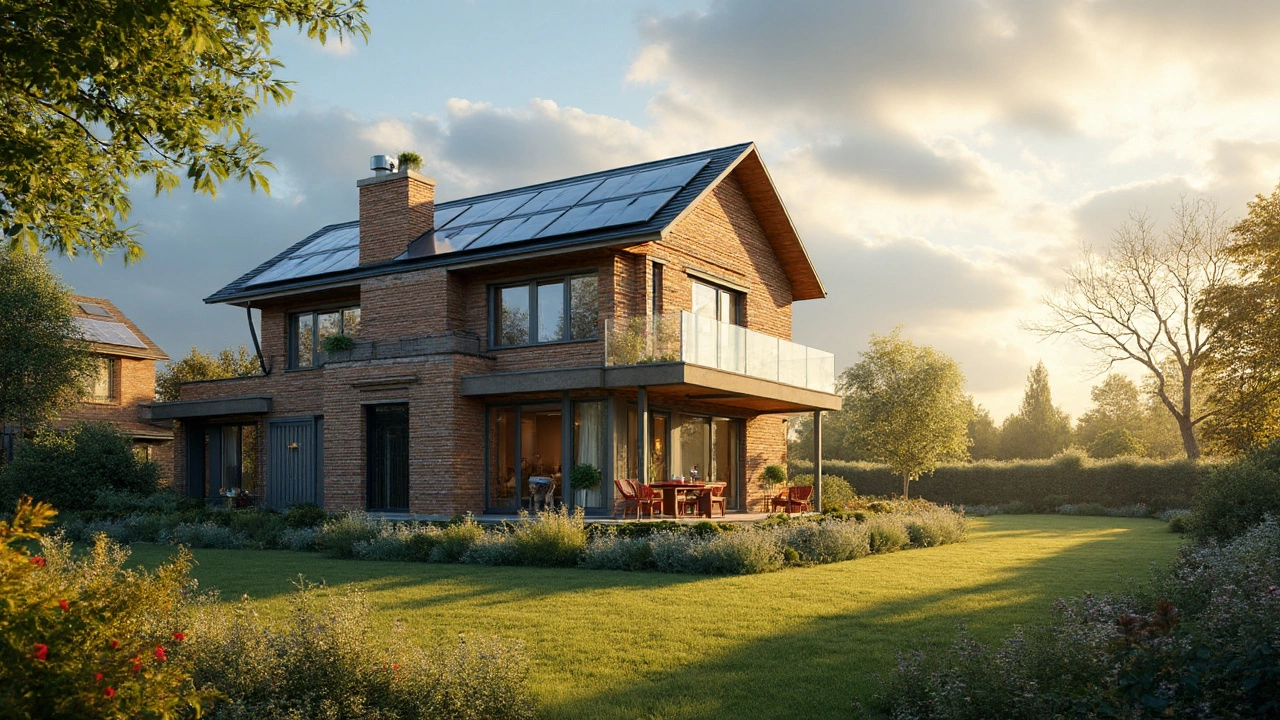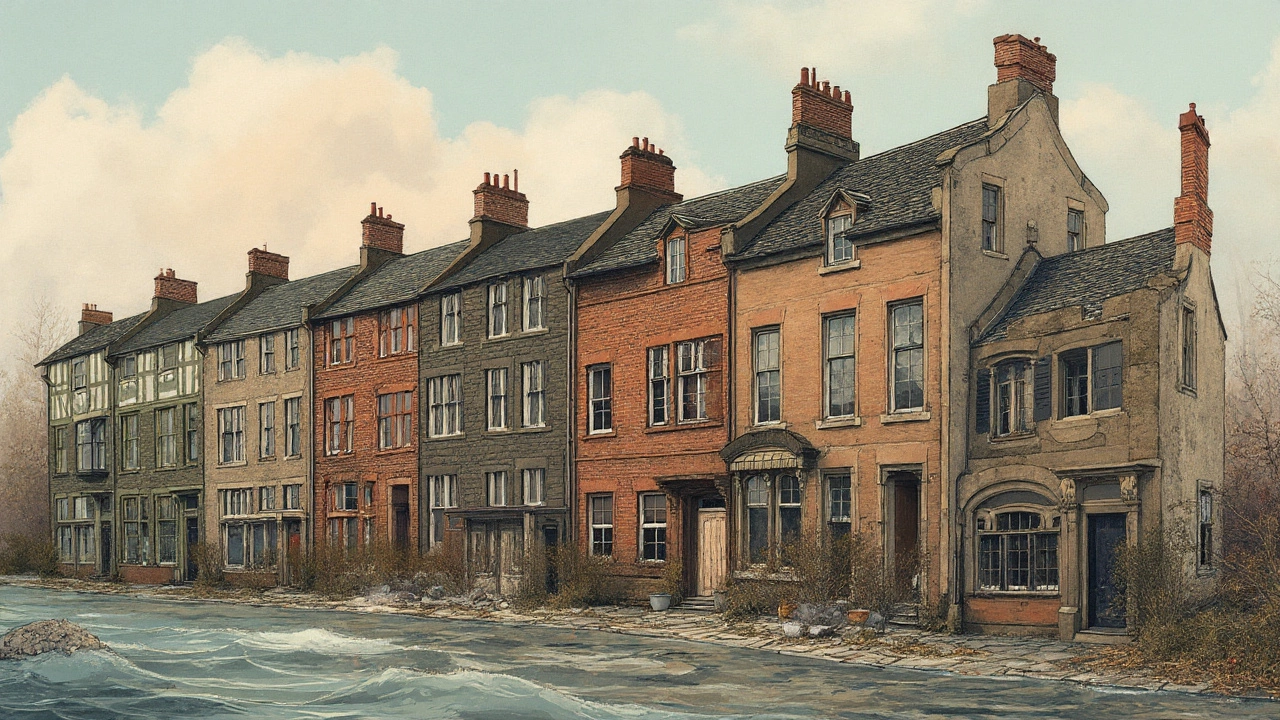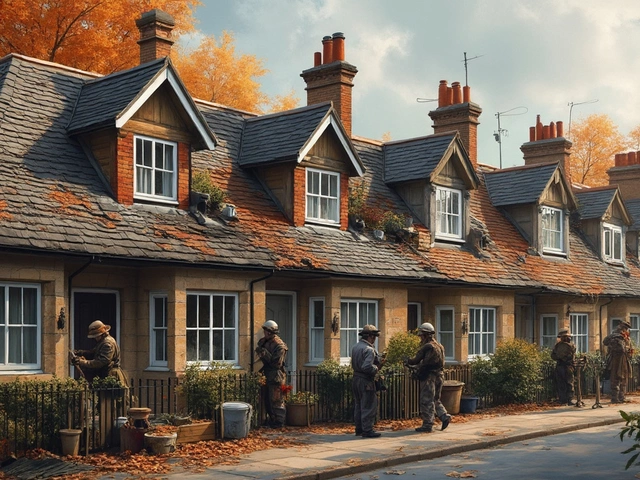Picture this: a storm rolls through town and your house is the only one still standing, barely a shingle out of place. Ever thought about what it takes to build a house that could outlast almost anything you throw at it? People have been trying to crack that code for centuries. Some aim to beat the elements, to survive floods, fires, and time itself. But durability isn’t just about bricks and beams—it's affected by design choices, your local climate, and even your budget.
What Makes a House Truly Durable?
Durability isn’t just some buzzword; it means your house won’t fall apart in a decade or collapse like a wet cardboard box in a hurricane. The magic lies in the material—and how you use it. Modern construction gives us a buffet of options, each with its pros and cons. Take concrete, for instance. Not the tired, cracked driveway stuff—I'm talking about reinforced concrete, the backbone of skyscrapers. Add steel rebar, and you get a house that laughs at termites, shrugs off rot, and takes a punch from earthquakes.
Then there’s brick and masonry. Ever seen those 100-year-old warehouses or old English cottages? Chances are, they’re masonry. Bricks are basically weather-proof, can handle fire, and aren't fazed by severe cold or heat. Of course, you have to watch out for water infiltration—keep those bricks and mortar joints sealed up, and you’re golden.
Stone takes it up a notch. It's the original all-star—the Egyptian Pyramids, medieval castles, those things are still around for a reason. Stone resists fire, pests, and weathering like a champ. It’s not cheap, and you need a skilled mason, but it’s almost unbeatable for sheer toughness.
But what if you live somewhere with hurricanes, tornadoes, or wildfires? Let's talk insulated concrete forms (ICFs) and aerated concrete blocks. They’re like concrete sandwiches—lightweight but super strong, with great thermal properties. Some homes built with ICFs in Florida have stood strong when neighboring wood frames got leveled by storms. Not bad for blocks and foam.
Still, no material is perfect. Wood frame houses, for example, might sound flimsy, but cross-laminated timber (CLT) has changed the game. This stuff stacks wood layers at right angles and bonds them, creating panels that perform more like concrete than two-by-fours. CLT won’t rot or twist if it’s well protected—and it’s surprisingly fire-resistant because thick wood chars and insulates itself, slowing down the burn.
Here’s a quick reference table comparing some popular house materials, just to keep things straight:
| Material | Lifespan (years) | Fire Resistance | Pest Resistance | Cost ($ per sq ft) |
|---|---|---|---|---|
| Concrete (Reinforced) | 100+ | Excellent | Excellent | 100-150 |
| Brick Masonry | 75-100 | Very Good | Good | 80-120 |
| Stone | 100+ | Excellent | Excellent | 150-200 |
| ICF Blocks | 80-100 | Good | Excellent | 120-150 |
| CLT (Timber) | 60-80 | Good | Moderate | 80-130 |
| Steel Frame | 80-100 | Very Good | Excellent | 110-140 |
Of course, picking a durable material is just part of the puzzle. The way you put the pieces together—the structural design, the roof choice, the foundation—all of it matters. A concrete house with a crummy roof won’t last long in a hailstorm. And foundations? If you skip on a solid foundation, even the strongest house materials can’t save you from shifting soil or water damage.
Want to avoid costly mistakes? Always ask your builder about reinforced seams, proper waterproofing, and amazing insulation. For example, look into hurricane ties in wood or steel frame houses, which keep roofs from peeling off in high winds. And don’t forget about good drainage around the property—water is a sneaky house killer, attacking foundations over time.
Climate has the final word. Building in Arizona? Skip the wood and focus on masonry or ICF to beat the heat and dryness. Flood-prone? Try raised concrete pilings or steel. Freezing winters? Double down on insulation with EPS foam or thick stone to keep out the chill.
So, you want your forever home to actually last forever? Pay special attention to material choices, airtight construction, expert waterproofing, and climate-specific details—and you’re well on your way.

How Houses Stack Up Against Nature’s Worst
Most durable house is the big search phrase everyone wants to know about, but nothing puts a home’s toughness to the test like Mother Nature in a bad mood. Hurricanes, tornadoes, earthquakes, wildfires—these don’t just threaten your comfort; they threaten the whole slab. What kind of materials and designs hold their ground when things get ugly?
If you’re living in a hurricane zone, think about the concrete fortress. Concrete block construction, especially reinforced with vertical and horizontal steel, can handle the highest wind speeds—up to 250 mph in some cases. Add hurricane shutters, roofs anchored with steel ties, and impact-resistant glass, and it's like armor for your house. After Hurricane Andrew hit Florida, codes actually changed, pushing concrete and block construction way up in new homes.
In tornado-prone areas, a monolithic dome home almost laughs at the wind. These structures use curved forms made from sprayed reinforced concrete over steel forms. Not the prettiest, but they have a crazy record for riding out EF-5 twisters with barely a scratch. Plus, the shape helps—it’s hard for the wind to catch and rip apart a dome.
For wildfires, building with non-combustible materials is the name of the game. Concrete, stucco, steel, and even fire-resistant glass can protect you when embers are blowing everywhere. In California’s fire belt, cement board siding and metal roofs are getting popular, since they don’t catch fire. Exterior features matter too—gutters with leaf guards and fireproof decks can make a difference when every minute counts.
Now earthquakes. It isn’t always about brute strength—it’s about how a building flexes and moves. Here, light but strong is the way to go. Engineered wood like CLT, or steel frames with deep foundations, hold up because they can sway without breaking. Reinforced concrete with special joints and seismic anchors also does the trick—think of what you’d see in a modern high-rise in Los Angeles or Tokyo.
Think about snow, hail, and freeze-thaw cycles in cold climates. Houses in the Alps get hammered by all three, but you’ll notice a lot of stone and tile, thick insulation, and steep metal roofs. The metal helps snow slide right off, and the stone acts as a thermal battery—so the house stays warmer, longer.
Let’s run through a checklist to boost your home’s survival odds, no matter where you are:
- Proper roof anchoring—use metal ties or hurricane straps in high-wind zones
- Impact-resistant windows and doors, especially in places prone to flying debris
- Fire-resistant siding and roofing—think cement, metal, or treated tile
- Deep or slab-on-grade foundations to avoid settling in wet or soft soils
- Smart landscaping—keep wood chips, dry brush, and trees away from the house
- Exterior waterproofing and drainage for rainy or flood-prone regions
- Flexible, reinforced framing and joints in earthquake country
If you’re serious about durability, you also want a builder who understands local risks and isn’t afraid to use the right fasteners, anchors, and materials. You could have the best brick or concrete walls in the world, but if your windows aren’t sealed or your roof can pop off, you’re not as safe as you think.
Bonus tip: Your choice of material can drive insurance costs up or down. Houses with fire-resistant or wind-resistant shells might get you hefty discounts on your premiums, meaning the upfront investment often pays for itself over time.

Budgeting and Planning for an Indestructible House
So how do you actually build the most durable house from the ground up, without torching your life savings? Money’s always a factor, but buying cheap means you’ll pay more sooner or later. It’s smarter to budget for better materials and skip trendy fads. For example, real stone veneer has a much longer lifespan than imitation stone panels. Reinforced concrete and full-brick walls cost more at the start but can wipe thousands off in long-term upkeep and repairs.
If your wallet has limits (and whose doesn’t?), focus on the high-risk areas first: spend more on the parts most likely to fail, like the roof structure, exterior cladding, windows, and foundation. You can always go with cheaper flooring or fixtures and upgrade those later—the shell of the home is what keeps everything safe.
Plan your design to avoid weak spots. Lots of glass looks cool, but it’s a weak point in big storms or fires. Go with impact-resistant or tempered glass if budget allows. Low-sloped roofs might work in Arizona, but they could spell disaster during hurricane season in the Gulf. High-pitched metal roofs tend to last much longer, especially under heavy weather.
Maintenance matters just as much as materials. Even the toughest masonry will fail if mortar joints aren’t kept sealed, and any wood structure needs regular treatment for bugs and moisture. Set reminders to check caulking, roof flashings, and drainage every year—the little stuff stops the big stuff from sneaking in.
Ready to bring it all together? Here’s a few solid tips for anyone planning to build or buy the most durable house possible:
- Don’t skimp on hiring a structural engineer—especially for custom or unconventional builds.
- Check local building codes—they exist for a reason, updated after real disasters.
- Choose local materials if possible; they’re designed to handle your climate quirks.
- Don’t get sold on shiny interiors if the exterior is cut-rate.
- Ask about warranty options on materials—some stone and concrete products have 50+ year guarantees.
Here’s a fact that’ll stick with you: The oldest house in the world that’s still standing is a stone home in Scotland, built over 5,000 years ago. It’s survived centuries of rain, wind, and shifting soil. Proof that choosing the right materials, with a little maintenance, can keep your house going much longer than a mortgage.
If you really want bragging rights, consider combining the best features: reinforced concrete walls, a standing seam metal roof, impact-resistant windows, insulated forms, and a lot of well-planned waterproofing. You’ll be left with a house that could handle almost anything—but you might also set the standard for your whole neighborhood.





